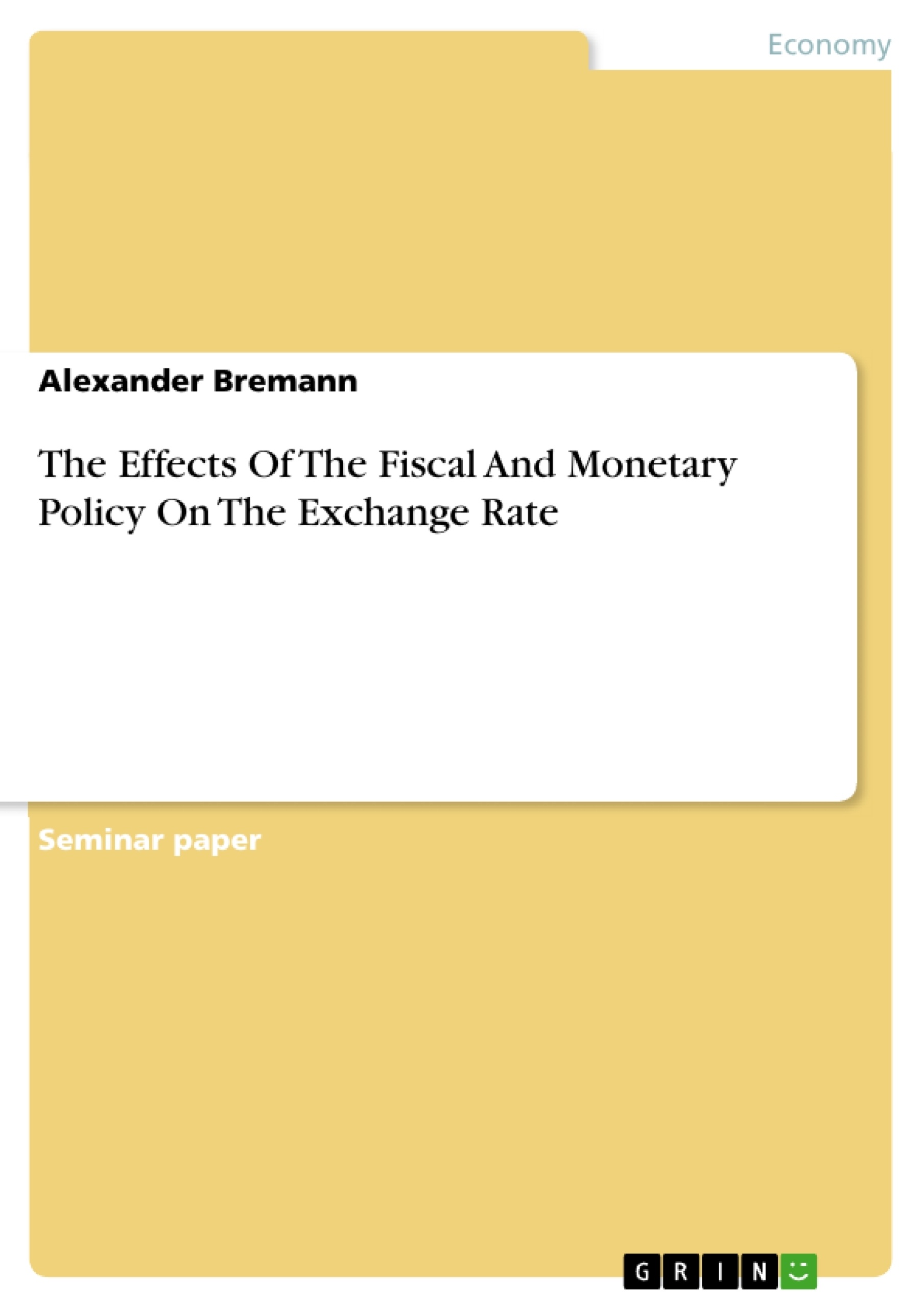The value of a nation’s currency and its exchange rate is a key indicator for the performance of an economy’s import and export. This assignment evaluates the different impacts of macroeconomic policies on the exchange rate, the following research also draws attention to the fact that economists have had mixed findings of the effects of macroeconomic policies on the exchange rate. The use of secondary research and the AA-DD model will further enhance the various factors that are responsible to appreciate or depreciate a currency. The results of this assignment show that; fixed and floating exchange rates, as well as the MPC score, have significant impacts on the efficiency of macroeconomic policies altering the exchange rate. Macroeconomic policies trigger disposable income, prices and interest rates within an economy, which consequently affects the foreign exchange market leading to a change in the exchange rate. Especially in the field of a floating exchange rate economy, the impacts of fiscal but also monetary policies can be shown, fixed exchange rates disable economies to use monetary policies due to the fact that these will with high certainty have an impact on the exchange rate.
Inhaltsverzeichnis (Table of Contents)
- i. Executive Summary
- ii. Table of Contents
- iii. List of Abbreviations
- iv. List of Figures
- 1. Introduction
- 1.2. Problem Definition
- 1.3. Objective
- 2. Fiscal Policy
- 2.1 Taxation Method
- 2.2 Spending Method
- 3. Monetary Policy
- 3.1 Discount Rates
- 3.2 Open Market Operations
- 3.3 Reserve Requirements
- 4. Policy Lag
- 5. Exchange Rate
- 6. Results
- 6.1 The effects of Macroeconomic policies on the exchange rate
- 7. Conclusion
Zielsetzung und Themenschwerpunkte (Objectives and Key Themes)
This assignment examines the impact of fiscal and monetary policies on a nation's exchange rate. It explores how these macroeconomic policies influence the value of a currency, considering both fixed and floating exchange rate systems. The assignment also recognizes the diverse perspectives among economists regarding the effectiveness of these policies in influencing exchange rates.
- The relationship between fiscal and monetary policies and exchange rate fluctuations.
- The effects of different exchange rate systems (fixed and floating) on policy effectiveness.
- The impact of macroeconomic policies on key economic indicators like disposable income, prices, and interest rates.
- The role of macroeconomic policies in managing currency crises and exchange rate stability.
- The significance of the Marginal Propensity to Consume (MPC) in understanding the influence of macroeconomic policies on exchange rates.
Zusammenfassung der Kapitel (Chapter Summaries)
- Introduction: This chapter provides an overview of the topic, emphasizing the importance of exchange rates in influencing economic performance. It introduces the concept of macroeconomic policies as tools for stabilizing the economy and highlights the contrasting views of economists regarding their effectiveness.
- Problem Definition: This chapter explores the challenges of managing exchange rates through macroeconomic policies. It discusses how policymakers strive to adjust these policies to stimulate desired changes in currency values, recognizing the potential impact on national economies and international trade.
- Fiscal Policy: This chapter examines the two main approaches to fiscal policy: taxation and spending. It analyzes how these methods influence the exchange rate and explores their potential impact on economic variables such as inflation and recession.
- Monetary Policy: This chapter delves into the three primary tools of monetary policy: discount rates, open market operations, and reserve requirements. It analyzes how these tools affect the exchange rate and their effectiveness in managing inflation and economic growth.
- Policy Lag: This chapter examines the time lag between implementing macroeconomic policies and observing their effects on the exchange rate. It discusses the implications of this lag for policymakers in effectively managing exchange rates.
- Exchange Rate: This chapter explores the concept of exchange rates and their importance in international trade. It discusses the dynamics of floating and fixed exchange rates and their impact on economic performance.
- Results: This chapter presents the findings of the research, analyzing the effects of macroeconomic policies on exchange rates under different scenarios. It explores the specific impacts of fiscal and monetary policies on exchange rate fluctuations and the role of the MPC in influencing these relationships.
Schlüsselwörter (Keywords)
The primary focus of this assignment revolves around the impact of fiscal and monetary policies on the exchange rate. Key terms include: exchange rate, macroeconomic policies, fiscal policy, monetary policy, fixed exchange rate, floating exchange rate, disposable income, prices, interest rates, inflation, recession, currency crisis, Marginal Propensity to Consume (MPC), and the AA-DD model.
- Citation du texte
- Alexander Bremann (Auteur), 2016, The Effects Of The Fiscal And Monetary Policy On The Exchange Rate, Munich, GRIN Verlag, https://www.grin.com/document/429692



